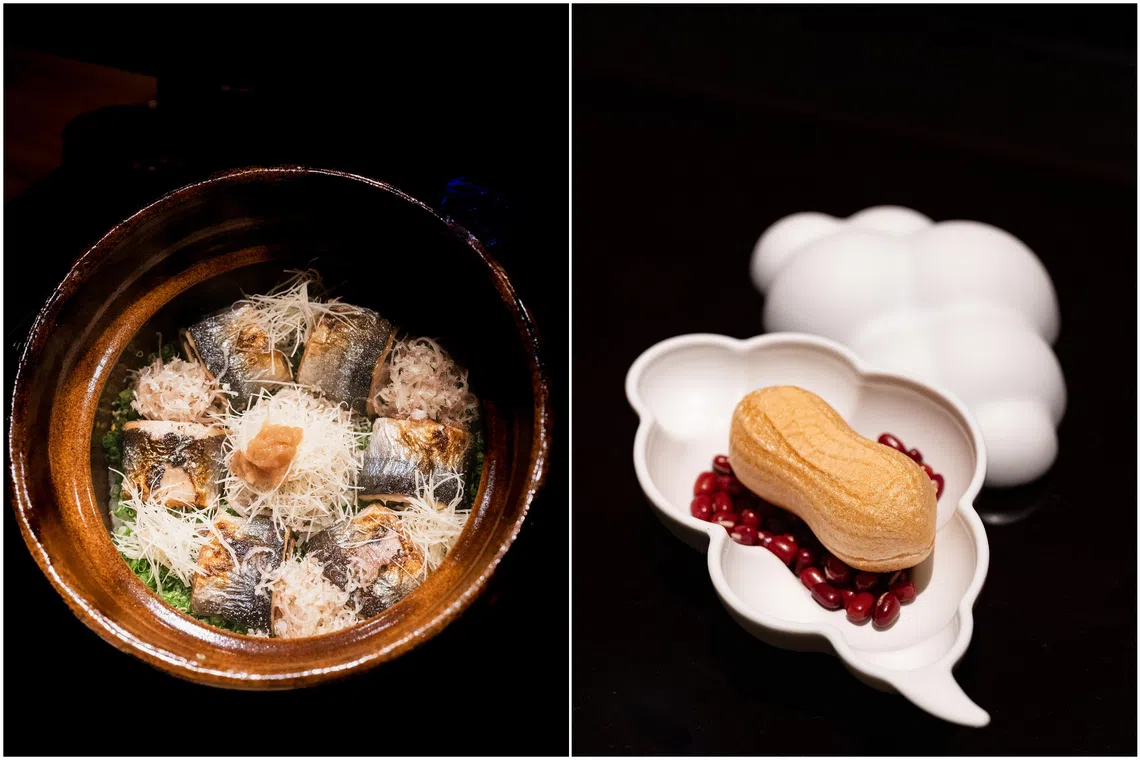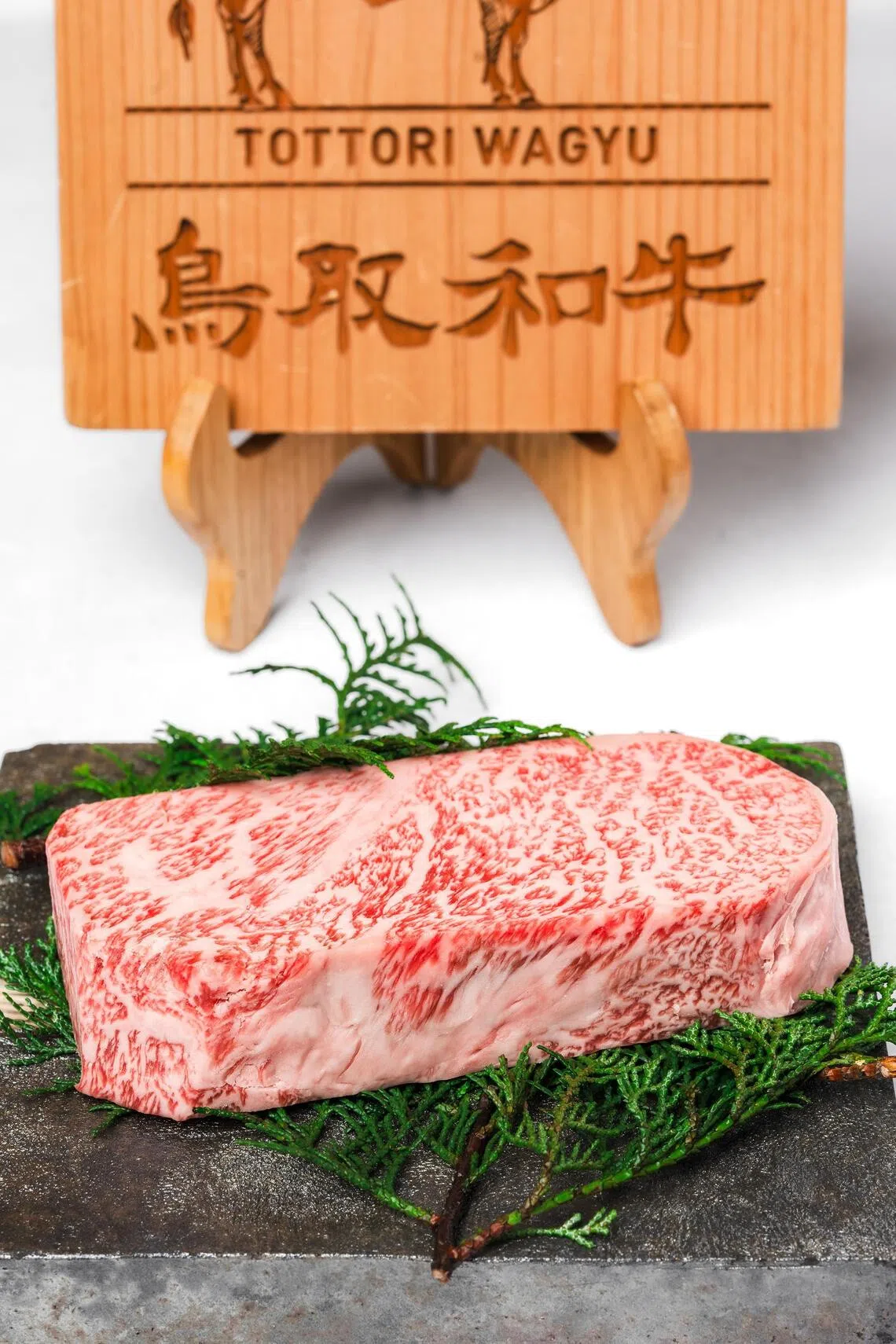Food Picks: Eat prized Japanese beef at kappo restaurant Ki-sho
Sign up now: Get ST's newsletters delivered to your inbox

The sanma donabe, and chef Taro Takayama's signature peanut-shaped monaka filled with foie gras at Ki-sho by Taro Takayama.
PHOTO: KI-SHO BY TARO TAKAYAMA
Follow topic:
- Chef Taro Takayama, formerly of Takayama, now heads Ki-sho, bringing signature dishes like his foie gras monaka and matcha financiers.
- Ki-sho uniquely imports wagyu from Tottori Prefecture.
- Highlights include dashi, white amadai with matsutake, seasonal sashimi, Chiba abalone, and a sanma donabe, showcasing autumn flavours.
AI generated
SINGAPORE – Change has come to kappo restaurant Ki-sho – Taro Takayama, 43, is its new chef.
Fans of his now-closed Takayama restaurant at OUE Downtown Gallery will be glad some of his signatures have followed him to Ki-sho in Scotts Road. These include the peanut-shaped monaka filled with foie gras, and the matcha and hojicha financiers served at the end of the meal.
He is taking Ki-sho to a new level with sourcing. The restaurant is the only one here to import wagyu from Tottori prefecture. Tottori was the first, in 1920, to set up a registry for wagyu cattle, starting the wave of beef brands from Japan.

Tottori Wagyu at Ki-sho.
PHOTO: KI-SHO BY TARO TAKAYAMA
At Ki-sho, diners can opt for the beef with a $30 supplement to its six-course lunch ($160). The beef is included in the seven-course menu ($280) at lunch and dinner, and in the nine-course dinner menu ($360).
I have it lightly cooked and served with grilled eggplant. The richness from the extravagant marbling is there, no doubt, but really, it has flavour in spades. Try not to dip it in the egg – it tastes better without.
That is by no means the only highlight of the meal. It starts with a small cup of dashi, made with rausu kombu soaked overnight in water, and then with both tuna and bonito flakes added to it. Such startling intensity, but somehow it does not overwhelm the palate.
Because it is the season, we get shiro or white amadai, the skin lightly torched, in broth with seasonal matsutake mushroom and green ginkgo. That course looks so plain, until you taste the richness of the fish, dry-aged for three days, and the earthy mushrooms.
The seasonal sashimi is pure joy to eat too. Firm slices of kue or grouper served with shio kombu to amp up the umami; kuromutsu or bluefish, coming into season, lightly torched and topped with grated daikon and ponzu; and a slice of otoro or fatty tuna, with a dab of shoyu enriched with egg yolk.
Awabi or abalone from Chiba is another smashing course, served in a little pot with a thickened sauce. What makes it special is that the abalone liver is made into tofu, kuzukiri style using kudzu or Japanese arrowroot.
And then when I think the fireworks are over, out comes the donabe.
Instead of crowd-pleasing crab or ikura, chef Takayama offers sanma or Pacific Saury. It is an autumn-to-early winter fish and I love it as nigiri sushi or grilled, so the skin is crisp and the flesh delightfully fatty. It is terrific with rice cooked in a claypot and topped with shredded miyoga, scallions and umeboshi paste.
As I float back down to earth, I put chef Takayama’s sanma donabe on my last-meal list, which, as it stands, will take at least 18 months to complete. Ki-sho is in very good hands.
Where: Ki-sho by Taro Takayama, 29 Scotts Road
MRT: Newton
Open: Noon to 3pm and 6.30 to 10.30pm (weekdays); closed on weekends
Info: 9061-6109


